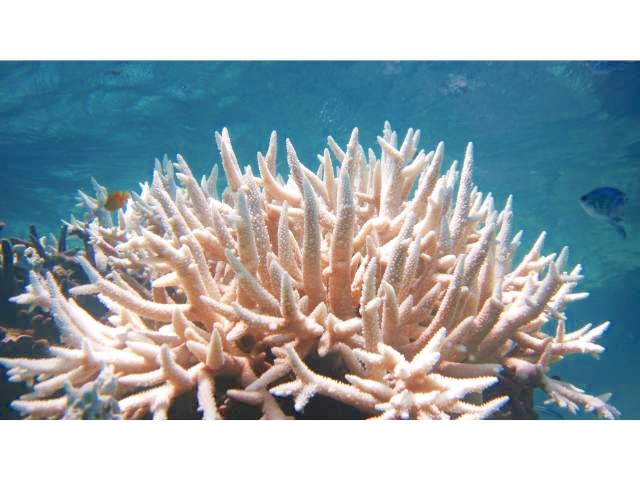
Introduction – What is Coral Killing Sunscreen?
Is Coral killing sunscreen an exaggeration? Not at all! Sunscreens that contain certain chemicals are known to injure coral reefs which jeopardizes other marine life by destroying their habitat. These chemicals are highly toxic to developing and juvenile coral by causing DNA damage, abnormal skeleton growth, deformities, and greater susceptibility to coral bleaching.
What are these Coral Killing Chemicals?
Known Coral Killing sunscreen chemicals are: Oxybenzone, Octinoxate, Avobenzone, and Octocrylene. Not sure if your sunscreen contains them? Check “active ingredients” on the sunscreen packaging.
Hawaii Puts a Stop to Coral-Killing Sunscreens

In light of this, in July 2018, Hawaii passed Senate Bill 2571 which went into effect January 1, 2021. This landmark bill made Hawaii the first state in the nation to ban “the sale, offer of sale, and distribution of sunscreens that contain the chemicals oxybenzone and octinoxate.”
Additional legislation, effective on January 1, 2023, added avobenzone or octocrylene to the list.
The Big Island Bans Everything But Mineral-Based Sunscreen
The Big Island went a step further. As of December 1, 2022, the sale and distribution of any sunscreen other than mineral-based is banned on the Big Island. Zinc oxide and/or titanium dioxide are the only acceptable active ingredients.
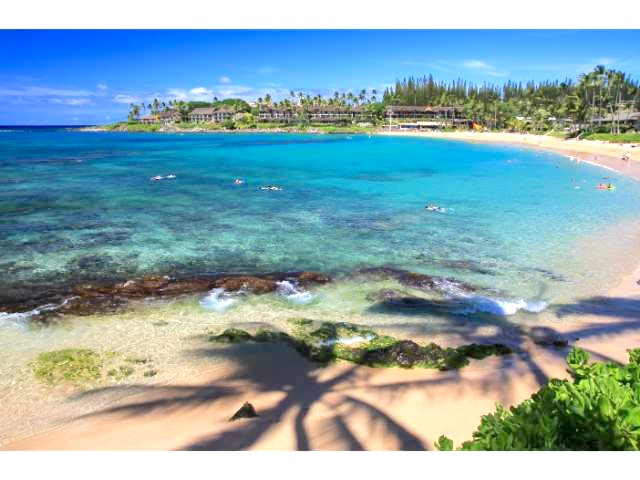
Maui Allows the USE of only Mineral-based
Maui is the first in the Island chain to not only ban the sale and distribution, but also the USE of any non-mineral sunscreen as of October 1, 2022. Fines can go as as high as $1000 but don’t panic! “Enforcement” is along the lines of educating beachgoers although the Department of Environment, Environmental Protection & Sustainability Division can fine you if you fail to “cease and desist.”
Coral Killing Enemies
Other Coral Killing Causes
Unfortunately, Coral has many enemies. Causes of reef destruction are global climate changes, overfishing, destructive fishing practices using dynamite, pollution, coastal development, dredging, coral collection for the aquarium market, to name a few – all caused by humans.
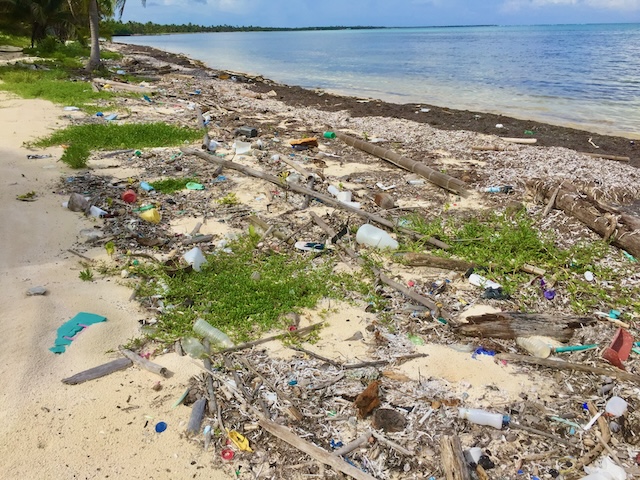
Throw in a few tropical storms, hurricanes, some marine debris, vessel damage, invasive species, and well – you can see that the continued production and sustainability of coral reefs are facing an uphill battle.
Coral Damaging Sunscreen is not a Minor Issue
Sunscreen toxicity may seem minor compared to some of these larger endeavors. However, the documentary “Reefs at Risk” estimates that over 14 tons of sunscreen enters the water around coral reefs annually. Can you believe that!!
That’s a lot of sunscreen! It’s particularly alarming when you consider that it only takes 62 parts per trillion to harm the coral. This is equivalent to one drop of water in 6 Olympic-sized pools. So, as you see, it doesn’t take much.
Finding Safe Sunscreen
What is Reef Safe Sunscreen?
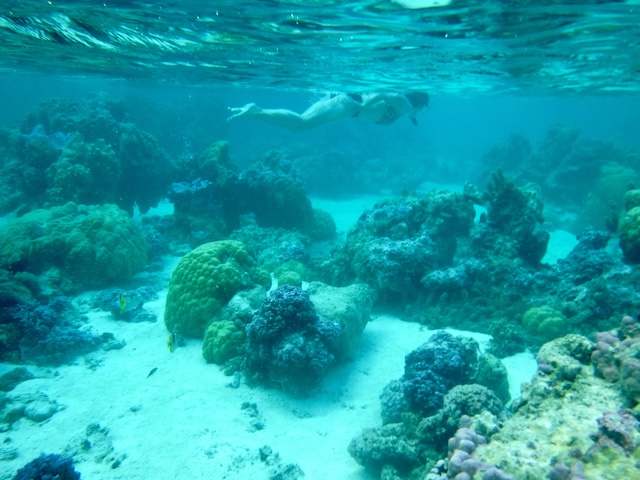
At this time, non-nano mineral-based reef-safe/reef-friendly sunscreen is best but what does that even mean? First off, there is no regulating agency for “reef-safe/reef-friendly” sunscreen. In fact, these terms do not even have an agreed-upon definition. It is up to you, the consumer, to look at the active ingredients to make sure it is mineral-based. If it says “reef safe or reef friendly” but contains any different active ingredients, back on the shelf it goes.
The Difference Between Nano and Non-Nano
What are nano’s and non-nano’s? They are simply a measurement of the size of the zinc oxide and titanium dioxide manufacturers use in the formulation of mineral sunscreens. A nanoparticle is one-billionth of a meter. Any particle greater than 100 nanometers is called a non-nano particle.

Why Non-Nano Sunscreen is Important to save our Coral
Why is this important? It’s very important because nanoparticles can penetrate your skin cells, and end up in your bloodstream. Likewise, coral reefs and other marine life can ingest these tiny particles when the sunscreen washes off in the ocean. On the other hand, non-nano mineral sunscreen does not penetrate the skin and is shown to be safer for our oceans. There it is in a nutshell. What else can you do? Read on.
Reef Safe Mineral Sunscreen Recommendations
You’re all ready to go except for getting the right sunscreen. Here are some highly rated choices:
Mustela – This sunscreen tics all the boxes as far as being reef-safe and as pure as can be.
Thinksport – Thinksport sunscreen is another great sunscreen. In addition to being reef-safe with an SPF of 50, it is also vegan. Their mission is to “Address the growing concern of harmful chemicals leaching from consumer products through the development of alternative products.
Badger – If you want a great organic reef-friendly mineral sunscreen, try Badger. Along with everything else, it is a small family-owned New Hampshire business who create their organic products in their 100% solar-powered facility.
Kokua Suncare – Here’s a Hawaiian-made sunscreen for you. Yes, it is reef safe, non-nano and it also contains Hawaii-grown antioxidant ingredients.
Raw Elements – If you prefer your sunscreen in a stick, try this one. Raw Elements meets all the requirements for non-nano mineral sunscreen and also comes in a variety of applications.
Sun Bum – Sun Bum meets all the criteria for being a reef-safe, non-nano mineral-based product. Plus it’s vegan!
Help Protect our Reefs – A few more tips
Be an Informed Consumer
What else can you do to protect the oceans, corals, and marine life? Be an aware and informed consumer. Just because a sunscreen is labeled “reel safe” does not make it so.
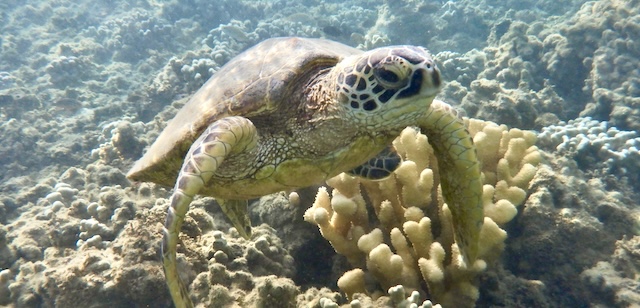
Research is ongoing and many more chemicals are bound to be identified as dangerous to coral. The ones that are banned in Hawaii are simply considered the MOST deadly to coral. For example, the Island Republic of Palau bans the production and distribution of sunscreens containing 10 different ingredients deemed harmful! As of January 1, 2020, they became the first Country in the world to ban all sunscreen ingredients and preservatives known or suspected to be reef-toxic. Kudos to Palau for banning these coral-killing sunscreen ingredients.
Do Your Sunscreen Research
Read your labels carefully to avoid ingredients detrimental to coral. Choose lotions and roll-on applications as aerosols simply blow into the ocean or are deposited onto the sand where they leach into the water.
If you do some research, you may find that some of common sunscreen ingredients can be harmful to humans. There are concerns about the endocrine-disrupting effects of three ingredients: homosalate, avobenzone, and oxybenzone. Not surprisingly, studies on these and other ingredients are ongoing.
These are all good reasons to choose a non-nano mineral-based reef-safe sunscreen. And on a final note – be aware that when you take a shower, chemicals wash off your skin and can pollute wastewater that ends up in the ocean as well.
Rashguards & Swimshirts
One of the very best ways to protect yourself and the marine environment is to opt for sun-protective clothing, instead of sunscreen.
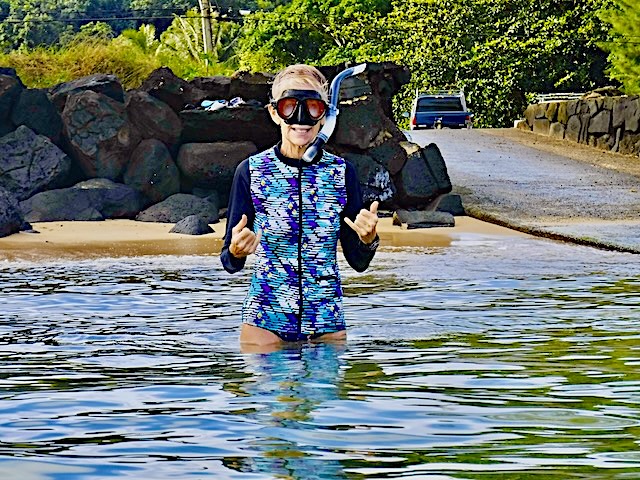
I always wear a rashguard, or during the winter months, a neoprene wetsuit zip-up jacket. Ladies rashguards come in a variety of styles; pull-over, zip-up – click here for a great selection. For a wetsuit, I definitely prefer a zip-up. The first time you try to take off a wet pull-over type neoprene top, you’ll see why. To function well, they need to be fairly close to the skin, so they’re not so easy to get off IMO. My personal preference is the Rip Curl Dawn Patrol zip up jacket. Jackets should fit snugly but be aware, Rip Curl runs small. My wetsuit jacket is a size 6 while most of my tops/jackets are XS. Check the Rip Curl size guide here and you’ll be fine.
There are also many choices for men in terms of rashguards and swim shirts. Check it out here. Jack burns easily so he wears a full-body rashguard suit.
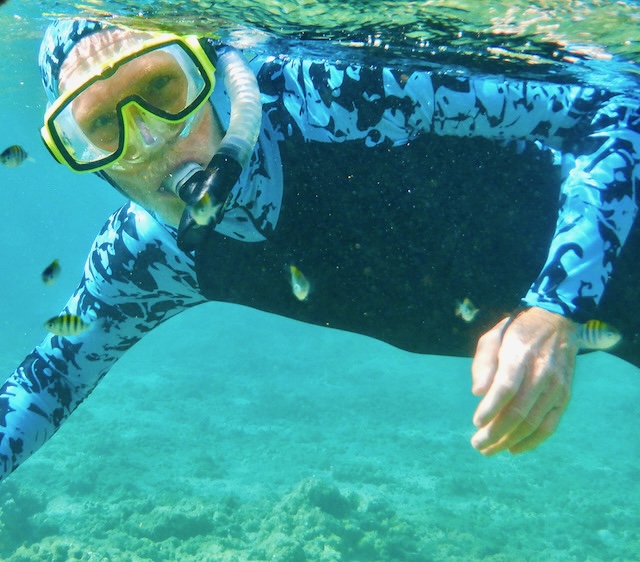
The same goes for neoprene wet-suit tops and jackets. Not only do they provide sun protection but they also keep you warm. Here is a nice selection.
Do Your Part to Protect our Coral Reefs
Thank you for taking the time to be an informed sunscreen consumer. I thought this was a simple, brief topic – but it is not. I could have gone into even more details about sunscreens and ingredients but I think you get the point. Please do your part to help protect our precious reefs. And please DO NOT WALK ON CORAL REEFS! That kills the coral too.
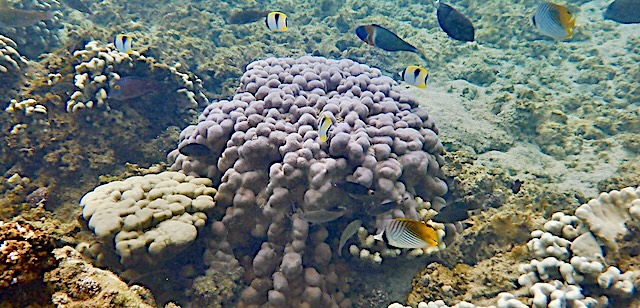
Planning to visit Kauai?
If you are considering Kauai as a travel destination, please check out our exhaustive post “Your Ultimate Guide to an Epic Kauai Vacation.” Need some tips for free things to do on the North Shore? Check out “Free Fun Things to do On the Kauai North Shore.” Info on Koke’e Cabins is here or maybe you need clarification on Ha’ena and Ke’e Beach. There are several more great posts on Kauai – just click on Hawaii at the top of the page to find them.
Much Aloha, Jack & Elaine
Like it? Share it! Pin it!




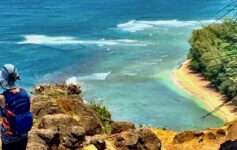
Leave a Comment